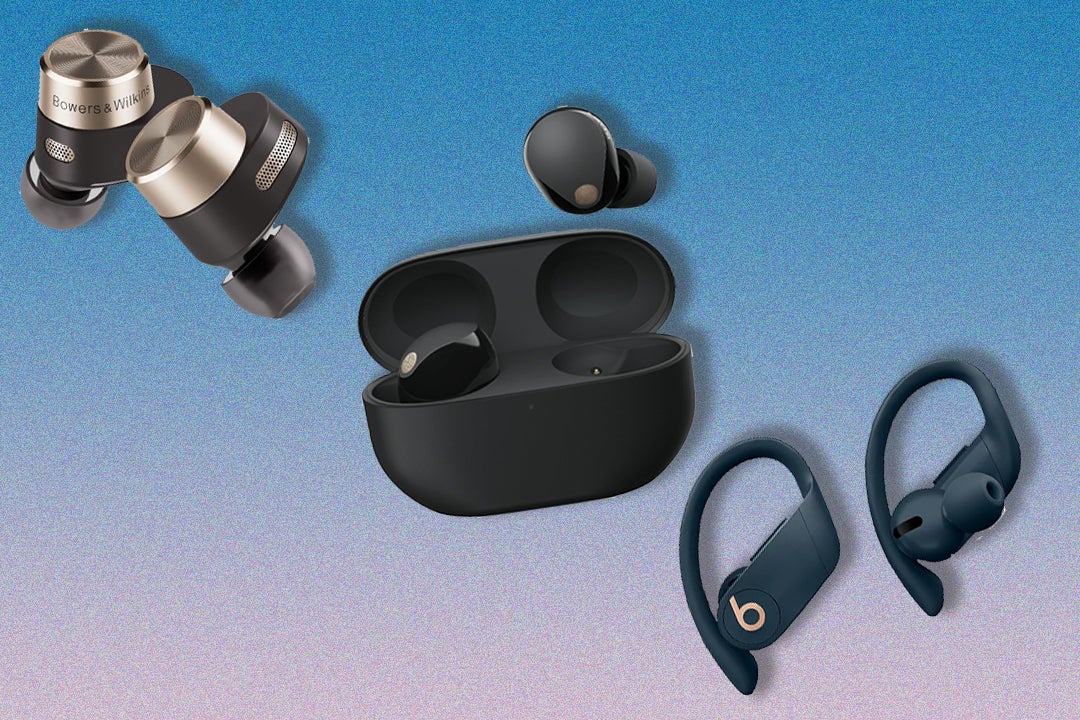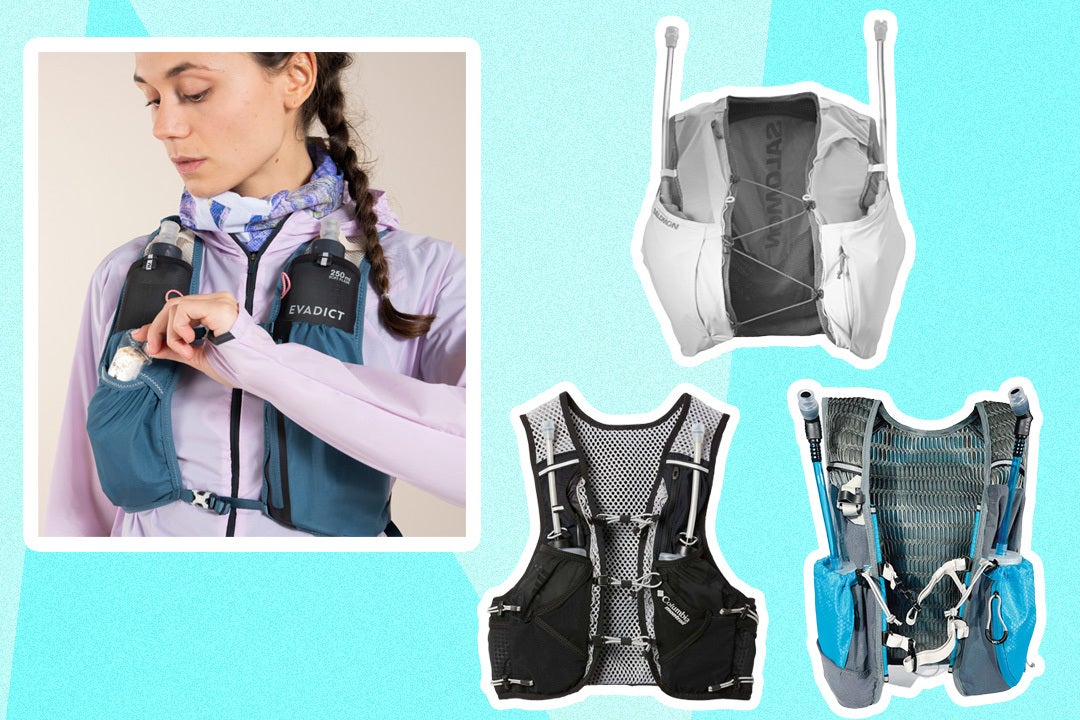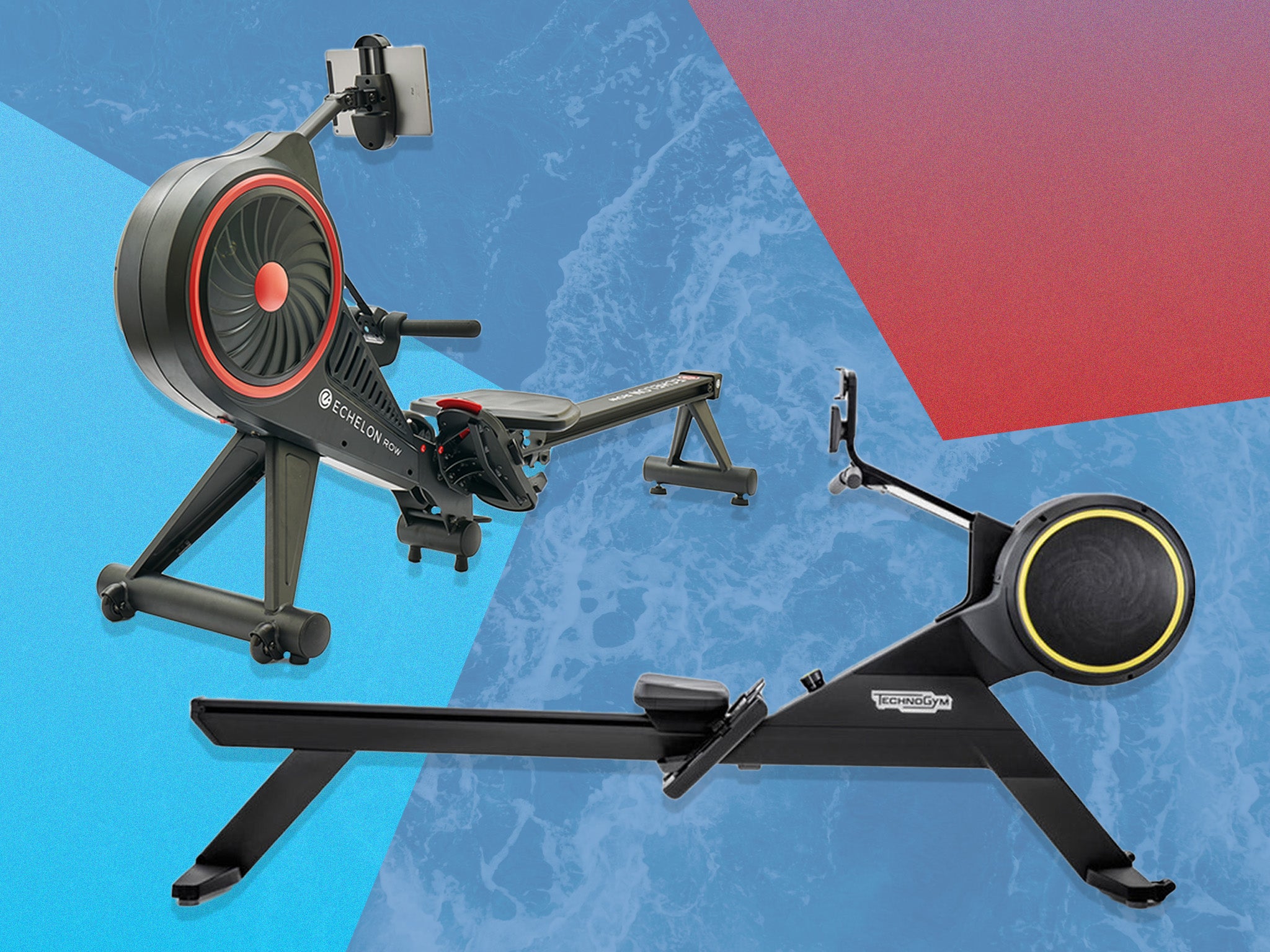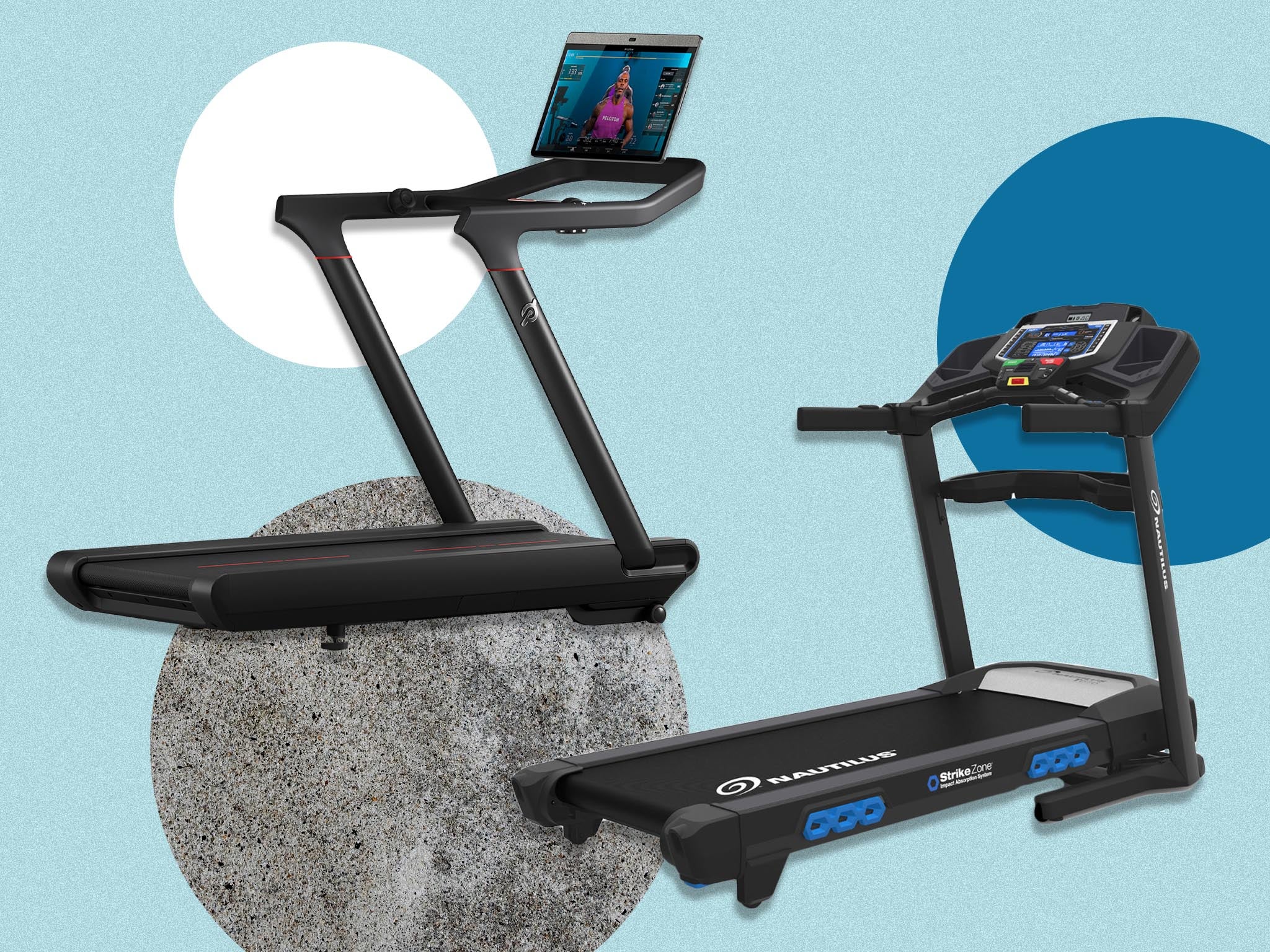
Stay up to date with notifications from The Independent
Notifications can be managed in browser preferences.
The Independent's journalism is supported by our readers. When you purchase through links on our site, we may earn commission. Why trust us?
8 best Garmin watches for every type of athlete
We test the best Garmin sports watches for running, cycling, golf and more
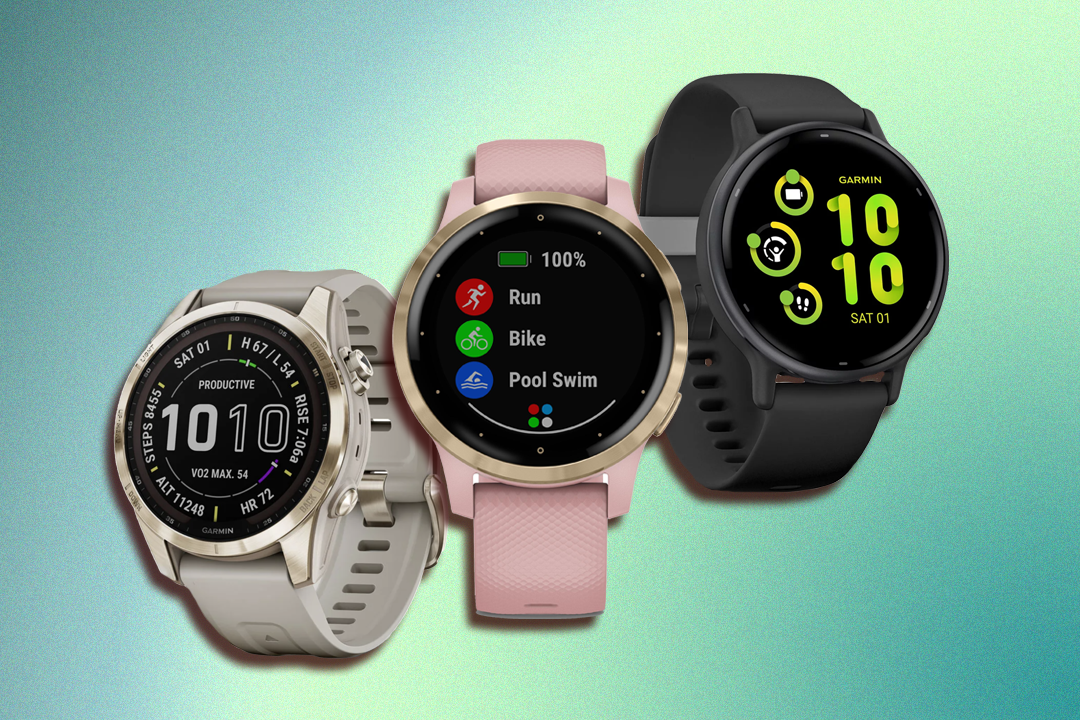
Garmin has been a leading manufacturer of sports watches and fitness trackers since 2003, releasing hundreds of models in that time. You’ll see them on the wrists of runners at 5K races and marathons, as well as on Ironman participants, golfers and even kite-boarders.
With so many different Garmin watches to choose from, it can be difficult to know which one is right for you. Most Garmin devices have in-built GPS, a long battery life, heart-rate monitoring and activity tracking, but the advanced metrics vary between models, making some more suitable for runners and others better for recording and analysing every detail of a cycling training session.
They’re not just for serious athletes, either. If you’re starting a new activity and you want to improve your fitness, the right Garmin watch could act as a personal trainer on your wrist, suggesting optimal times to work out based on your body’s recovery and sleep scores.
To help you navigate the wearables rabbit warren, we’ve tested out some of the brand’s most popular models, to help you pick the right type of Garmin watch for every circumstance.
How we tested
We worked up a sweat and burned some calories doing different activities with each Garmin watch to fully explore its features. Each model was tested running and cycling, as well as swimming so that we could check how well it operated in water.

After setting up the Garmin watches and trying to sync them with both an Apple and an Android phone, we scrolled through the watch interfaces to explore what features they offered and what metrics they could monitor. We rated each watch for usability, such as how easy it was to find the key statistics, as well as accuracy of GPS, durability and comfort on the wrist. We also tested the watch in daily life, assessing how it looked and felt.
The best Garmin watches for 2023 are:
- Best Garmin watch overall – Garmin vivoactive 5 GPS smartwatch: £259.99, Amazon.co.uk
- Best budget Garmin watch – Garmin vivoactive 4: £199.99, Decathlon.co.uk
- Best Garmin watch for running – Garmin forerunner 265 wrist heart rate GPS fitness watch: £429.99, Johnlewis.com
- Best Garmin watch for cycling – Garmin forerunner 955: £417.75, Amazon.co.uk
- Best Garmin watch for golfing – Garmin approach S70: £599.99, Garmin.com
1 Garmin vivoactive 5

- Best: Garmin watch overall
- Weight: 23g
- Battery life: 13 hours in training mode, seven days in watch mode
- Display type: AMOLED touchscreen
- Water resistance: 50m
- Colourways: Four
- Heart-rate monitor: Yes
- Why we love it
- Bright AMOLED screen display
- Take note
- It can receive messages but you can’t reply to them from the wrist
The first thing we noticed about the vivoactive 5 was its sleek, streamlined design. You could wear it day and night and it wouldn’t detract from your outfit. Once on, we loved that it weighed next to nothing (23g, to be precise), which meant we barely noticed it on the wrist.
It can track a wide range of fitness metrics, including steps, heart rate, distance, calories burned, sleep quality, and more than 30 preloaded sports. We were also impressed by its sleep coaching capability, as it gives you a sleep score and personalised sleep coaching. Priced competitively, it offers a lot of features for £270 and is easy to sync to Garmin Connect for more insights and coaching plans.
2Garmin vivoactive 4
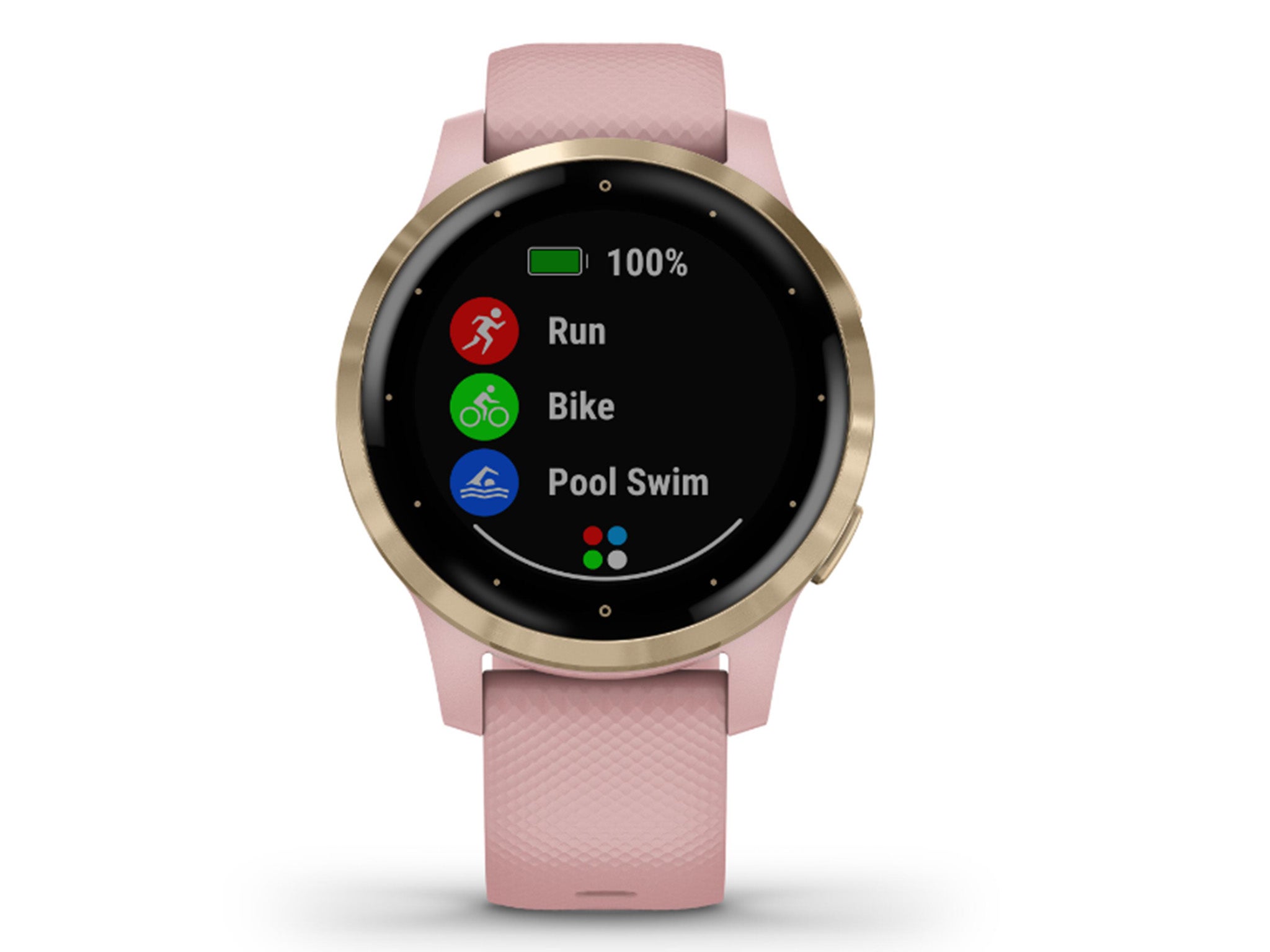
- Best: Budget Garmin watch
- Weight: 50.5g
- Battery life: 6 hours in tracking mode, eight days in watch mode
- Display type: 1.3in transflective memory-in-pixel (MIP) display
- Water resistance: 50m
- Colourways: Six
- Heart-rate monitor: Yes
- Why we love it
- Great value for money
- Take note
- Relatively short battery life
The vioactive 4 is a seriously stylish smartwatch, as well as being one of the best value for money Garmin releases. Whether you’re a seasoned athlete or a fitness enthusiast just starting out, the vivoactive 4 has you covered. It tracks a wide range of metrics, including heart rate, sleep, steps, calories burned, and distance travelled. It also features more than 20 preloaded sports apps, so we were able to track workouts for a variety of activities, including running, swimming, cycling and yoga.
A built-in GPS allowed us to track location and distance travelled during runs and cycle rides, while the pulse oximeter measured blood-oxygen saturation levels, so we could see how hard we were pushing.
We also enjoyed playing with all the different tracking features for sleep, the menstrual cycle and stress. The watch was able to detect higher levels of stress while we were standing up on a packed train during our commute, and it prompted us to do a breathing activity to calm down. We wouldn’t have done this had we not been prompted, and we were pleasantly surprised to see this feature on a watch costing less than £200.
3Garmin forerunner 265

- Best: Garmin watch for running
- Weight: 46g
- Battery life: 20 hours in training mode, 13 days in watch mode
- Display type: AMOLED; Corning Gorilla Glass 3 lens
- Water resistance: 50m
- Colourways: Three
- Heart-rate monitor: Yes
- Why we love it
- It’s training readiness score can help runners avoid injury
- Take note
- The 46.7mm screen may be too large and attention-grabbing for some
Any runner knows it’s not how many hours you train that determines race performance, it’s how smart you train. The forerunner 265 can help with that, with a training readiness feature that tells you when you’re prime for peak performance. We enjoyed receiving personalised workout plans each day, which motivated us to get out and run, as we knew they were helping us get faster and stronger.
The large AMOLED display was a dream to read during runs, keeping us informed of our progress in real time. It’s customisable data fields and intuitive interface made it easy to track essential metrics such as pace, distance, and heart rate during workouts, too.
4Garmin forerunner 955

- Best: Garmin watch for cycling
- Weight: 52.2g
- Battery life: 42 hours in training mode, 15 days in smartwatch mode
- Display type: 64-colour
- Water resistance: 50m
- Colourways: Two
- Heart-rate monitor: Yes
- Why we love it
- Lightweight and comfortable
- Take note
- The display isn’t as crisp as an OLED display
Admittedly this is not the cheapest of watches, but the data it offers is staggering. Once we strapped it to our wrist and wore it for just 24 hours, we had a whole host of numbers about recovery, health, training readiness, optimal training zones, stress levels and more.
For cycling, it tracks in minute detail every second of your workout. To start, select your cycling activity from bike, indoor bike, gravel bike cyclo-cross, MTB, ebike, bike commute and bike tour. Then customise the data screens for each activity, to see time, speed, power and navigation at a glance. The map feature blew our minds. Use it in real time to navigate your route from your wrist or use it in advance to plan courses or navigate to a place of interest. It’s a safe way to explore some new cycle paths, without fear you’ll get lost.
5Garmin approach S70

- Best: Garmin watch for golf
- Weight: 56g
- Battery life: 20 hours in tracking mode, 16 days in watch mode
- Display type: AMOLED
- Water resistance: 50m
- Colourways: Two
- Heart-rate monitor: Yes
- Why we love it
- It cleverly advises golfers on what clubs they need
- Take note
- It’s an investment purchase
Whether you’re a new player or you have a seriously impressive handicap that you’re trying to whittle down, this watch could save you a lot of money in coaching fees. It acts as a virtual caddy, suggesting the best club to use, based on your performance and the wind conditions, as well as tracking your putts and providing statistics on your putting accuracy.
An innovative shot dispersion chart will help you visualise potential hazards, based on your club choice. We’re not seasoned golf pros, but we did like the wind speed and direction data that gave us a bit of help working out where to aim.
We also tried to use the pin pointer feature, which is essentially a compass that points to the pin location when you are unable to see the green. This is designed to help good golfers line up a shot even if they are in the woods or in a deep sand trap. It was too advanced for us. We’d need a lot more hand-eye co-ordination to be able to line up a shot better and not just a watch, but we can see how it would help take your game to another level if you had some natural ability to start with.
6Garmin venu 3S

- Best: Garmin watch for tracking gym activity
- Weight: 40g
- Battery life: Eight hours in tracking mode, 10 days in watch mode
- Display type: AMOLED
- Water resistance: 50m
- Colourways: Five
- Heart-rate monitor: Yes
- Why we love it
- You can make and take calls directly from the wrist
- Take note
- Pricey
With a beautiful French grey coloured strap and gold detail around the bezel, this watch looks the part. If you love to look your best when you work out, the venu 3S is the accessory to complete your outfit.
Don’t underestimate its powers, either. The venu 3S is a great tool if you’re stuck in a rut in the gym, as you can follow animated workouts that motivate you to leave the comfort zone behind. We loved that it presents health as a holistic concept, giving detail on overall energy levels, based on sleep, naps, stress levels, previous workouts and more. This alerted us to when we were in peak condition and ready to push a little harder, as well as giving us an excuse to take things easy.
It is on the pricier side but it did have the best connectivity out of all the watches we tested. With a built-in speaker and microphone, the venu 3S allowed us to make and take calls right from our wrist, when paired to the smartphone, as well as reply to texts by using our phone’s voice assistant.
7Garmin instinct crossover solar
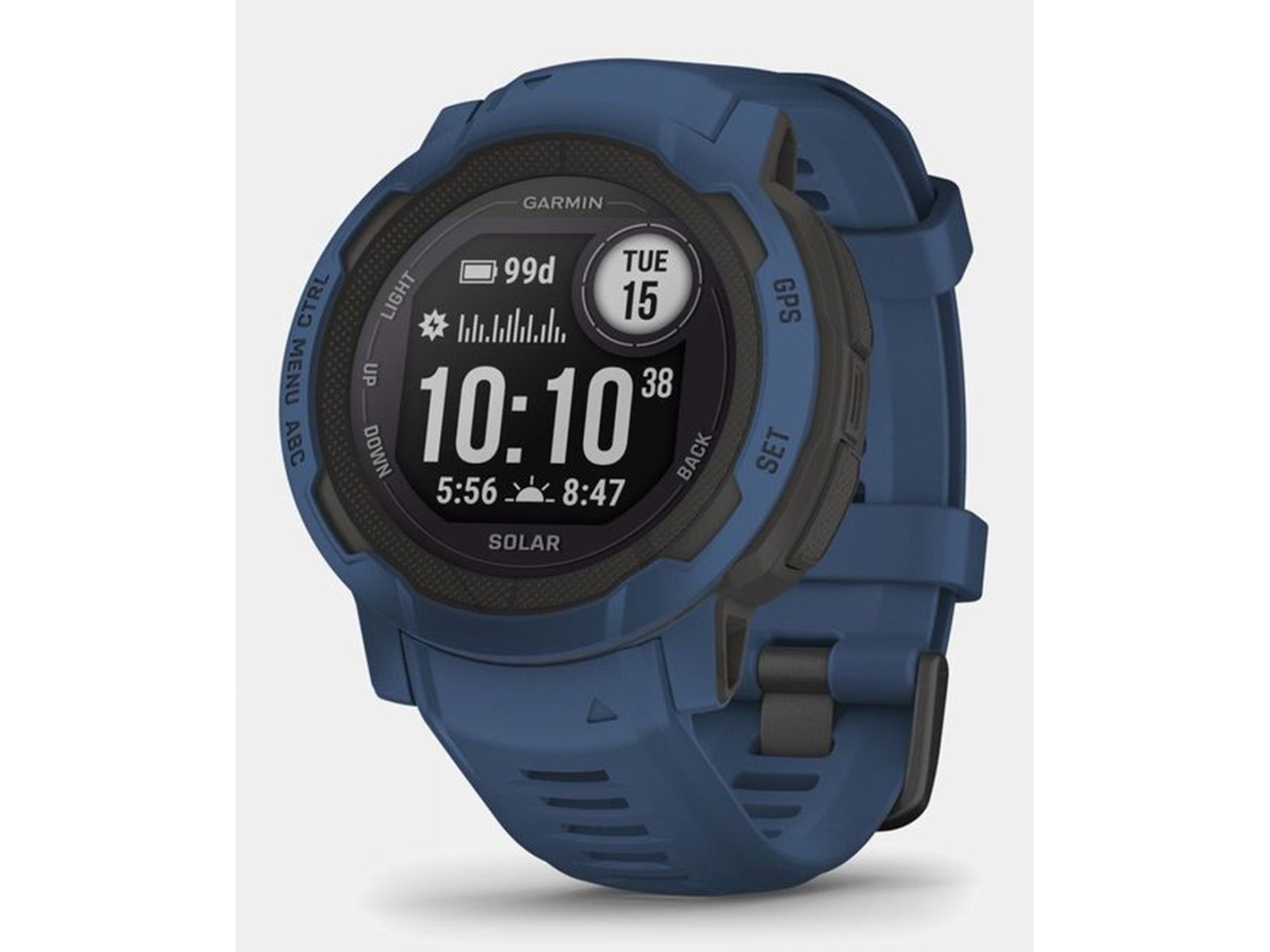
- Best: Garmin watch for outdoor activities
- Weight: 65g
- Battery life: 31 hours in tracking mode, 70 days in watch mode
- Display type: Luminescent analogue hands and a digital display
- Water resistance: 100m
- Colourways: Three
- Heart-rate monitor: Yes
- Why we love it
- Epic battery life
- Take note
- Bulky, design
This rugged and hardy watch combines the best features of a traditional analog watch with the latest smart technology, making it a perfect companion for outdoor adventures, such as kite surfing, hiking or skiing.
Thinking about climbing a mountain or going off the beaten track? One of the biggest positives of the instinct crossover solar is its long battery life. With solar charging, it can last for weeks on a single charge, making it ideal for extended trips off the grid.
It is also incredibly durable and water-resistant, so you can wear it in any condition, without having to worry about damaging it. One of our favorite features was the clock face, as the watch’s hands are pigmented with super-luminova black, which meant we could clearly read the time in any lighting conditions, even in complete darkness during dawn runs.
8Garmin fenix 7S sapphire solar

- Best: Garmin watch for Ironman athletes
- Weight: 58g
- Battery life: 37 hours in training mode, 14 days in watch mode
- Display type: Transflective memory in pixel (MIP)
- Water resistance: 100m
- Colourways: Three
- Heart-rate monitor: Yes
- Why we love it
- Offers detailed training insights for 40+ activities
- Take note
- Expensive
While it may hurt to spend almost £700 on a watch, you are getting a lot for the price. It’s pre-loaded with more than 40 activities and each offers expert tracking, recording and coaching detail.
For example, we tested it for running and enjoyed uploading routes and letting the fenix 7S guide us to a target time, telling us when we were going too fast and when we could push harder.
But it was after a session that we really appreciated what this watch has to offer, as you can see data such as estimated sweat loss, cadence, calories, and time spent in different heart-rate zones. We could track our progress with VO2 Max and training effect figures and recover smarter with analysis of weekly training load and recovery time.
It performed equally efficiently, to a dizzying level of detail, for strength training, cycle rides and swimming. If you do a lot of sport, or you’re training for a big event such as an Ironman, which means you’d take advantage of all the watch’s insights, it’s definitely worth the splurge.
The verdict: Best Garmin watches
Garmin watches are expensive pieces of kit but the vivoactive 5 GPS smartwatch offers all of the features you need for a smart workout at the lower end of the price scale. It also looks like a chic, streamline smartwatch, rather than a bulky fitness tracker. However, the forerunner 265 watch is a great choice for anyone who’s serious about running. If you wear it three times a week for several years, it will work out as excellent value per wear, while powering you through several PBs.
Looking for more inspiration? We’ve rounded up the best running shoes for men and women
Voucher Codes






